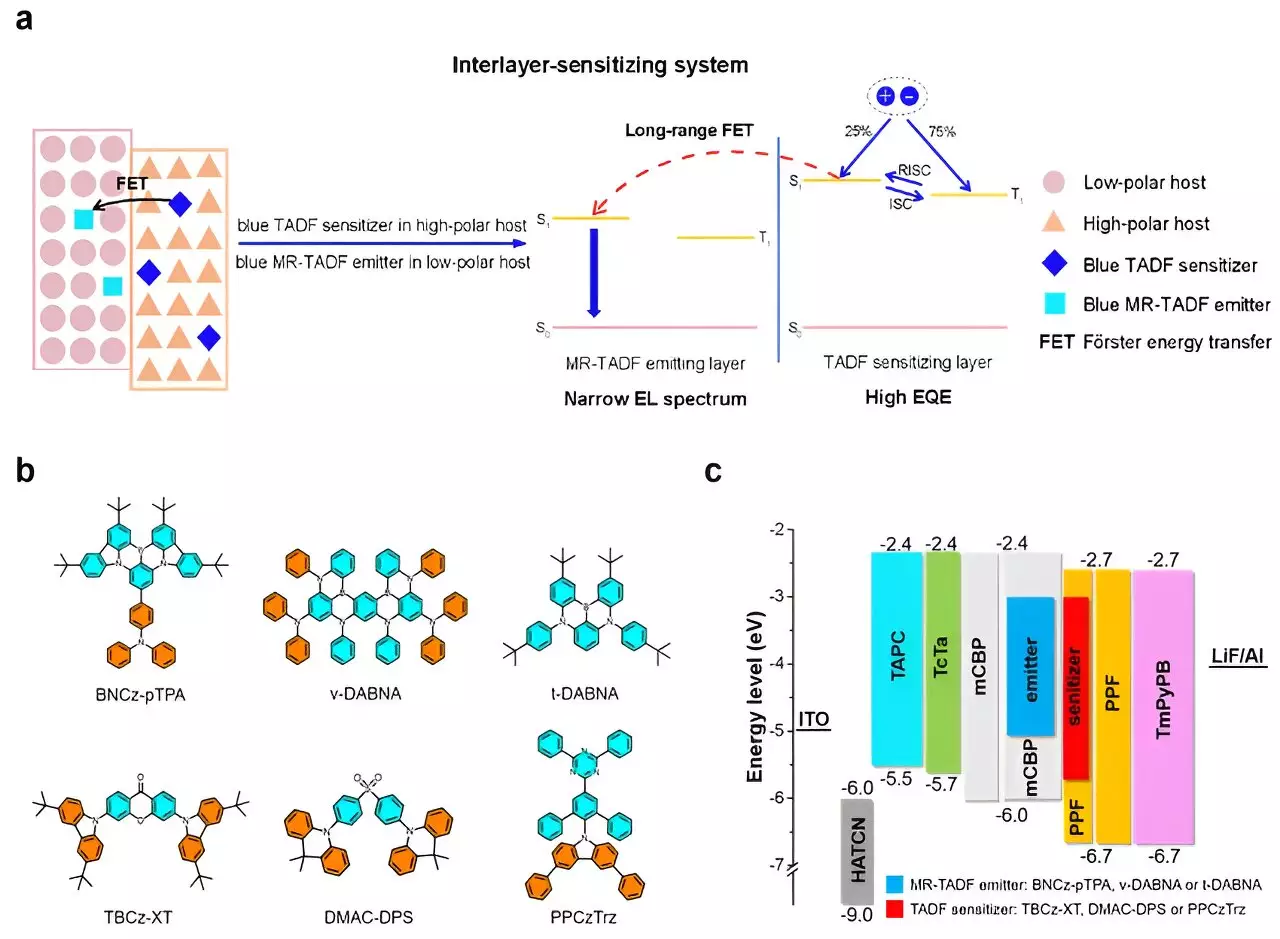Organic light-emitting diodes (OLEDs) have gained significant attention for their potential in displays and lighting due to their energy efficiency and color quality. One promising advancement in OLED technology is the development of Multi-resonance thermally activated delayed fluorescence (MR-TADF) materials. These materials offer narrow electroluminescence (EL) spectra, making them ideal for high-performance OLEDs. However, challenges such as triplet-involved quenching processes have hindered the efficiency of blue MR-TADF emitters.
In a recent study conducted by scientists in China, a novel interlayer sensitization strategy was proposed to enhance the EL efficiencies of blue MR-TADF emitters. This strategy involved separating the TADF sensitizer and MR-TADF emitter into two adjacent emitting layers with different hosts. By utilizing long-range Föster energy transfer (FET), the TADF sensitizer was able to effectively sensitize the MR-TADF emitter, leading to improved performance in OLEDs.
Research Findings
The research team led by Professor Zujin Zhao from South China University of Technology successfully demonstrated the effectiveness of the interlayer sensitization strategy in constructing high-performance blue hyperfluorescence OLEDs. By utilizing different blue MR-TADF emitters and TADF sensitizers, the team achieved exceptional external quantum efficiencies (EQEs) of up to 38.8%. These results showcased a significant improvement in comparison to unsensitized devices, highlighting the potential of this strategy in enhancing EL efficiency and color purity simultaneously.
The development of the interlayer sensitization strategy opens up new possibilities for optimizing blue MR-TADF emitters in OLED technology. By addressing issues such as triplet-involved quenching processes, researchers can pave the way for the fabrication of OLEDs with superior performance and color quality. The promising results of this study signify a step forward in the advancement of OLED technology and highlight the importance of innovative strategies in achieving enhanced efficiency in organic electronics.
The interlayer sensitization strategy presents a promising approach to improving EL efficiencies in blue MR-TADF emitters for OLED applications. By utilizing Föster energy transfer and separating the TADF sensitizer and MR-TADF emitter into distinct layers, researchers have successfully enhanced the performance of OLEDs, achieving high EQEs and color purity. This research contributes valuable insights to the field of OLED technology and points towards a bright future for the development of high-performance organic electronics.


Leave a Reply